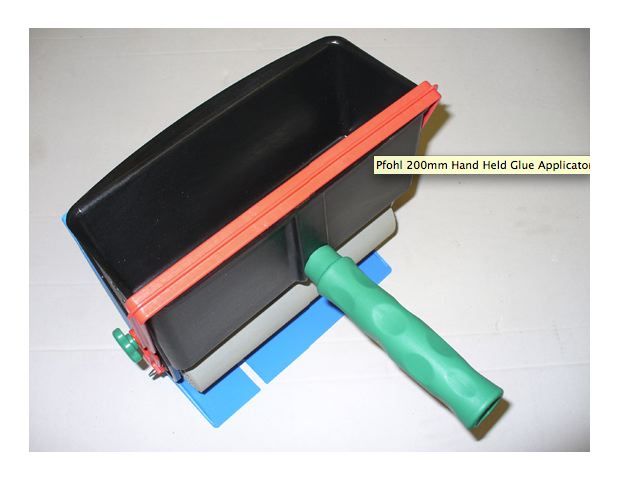Question
We have a product that uses edge-glued lumber sticks (similar to butcher block). We have enough clamps to laminate 3 batches about 18" wide X 10' long. The process of applying the glue and loading the clamps for these three batches is about 30-40 minutes. Depending on temperature, this lumber stays in clamps about 2 hours. We are looking for an elegant way to deliver the glue that does not require tremendous cleanup. Ideally we could load a glue hopper similar to this and use it over a 3-4 hour cycle without having to clean everything up. We sometimes go a couple of weeks between sessions of gluing.
Does anybody have experience with a hopper system like this one? Is there a way to regulate how much glue this thing feeds? Is there a way to effectively cover the top so the glue does not get too thick between glue ups (3-4 hours)? How easy are these to clean? We use yellow Titebond glue. The literature says this is good for PVA type glue. Would a gravity hopper work okay for thicker aliphatic resin glues?

Forum Responses
(Cabinetmaking Forum)
From contributor M:
I cannot comment on the hopper, but if you are doing enough of them to justify the cost, take a hard look at the Pizzi pressurized glue delivery systems. You can get an applicator for the glue wand that can deliver the exact width of glue you need for your staves. The nice thing is the applicator stores in an onboard water container and is ready to go when you need it. Just a quick squirt to blow the watered down glue out of the end and it's set.
First I made a simple snug lid for the top. Then when I was done with the application, which typically took about 2 minutes on a 2' x 8' panel, I put the hopper on its stand in a plastic container with approximately 3" of water, coming just below where the glue comes out of the hopper.
When I was ready to apply again, I rolled the wet roller on newspaper 6 times each on a dry area. The roller was dry and ready to use again. At the end of the day, I drained the hopper, which is not 100% by any means, and then immersed the entire assembly in about 5 inches of water.
The next morning I took the hose to the entire thing and got it 99% clean and started again. If you clean it thoroughly at the end of every day, it might take 15 minutes to get it perfect. There is a container especially made for this hopper somewhere out there. I have used it for Unibond 800, but I'm pretty sure you have to do a 100% clean up at the end of each session.